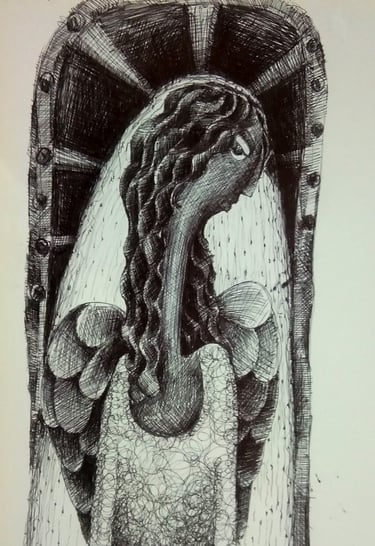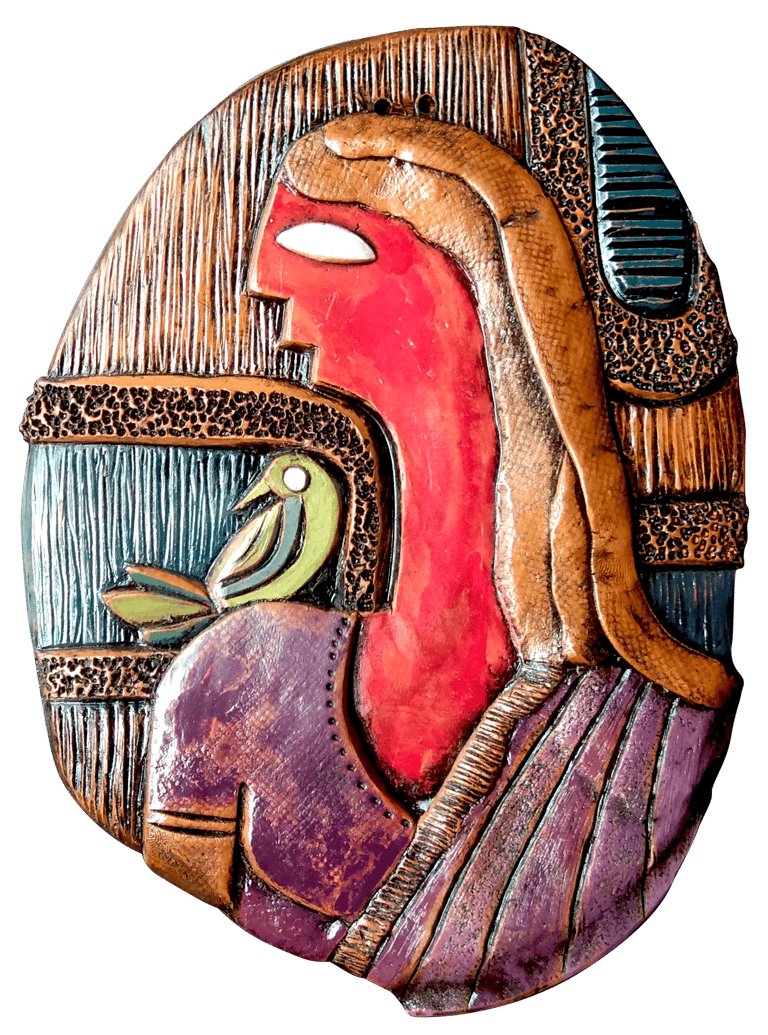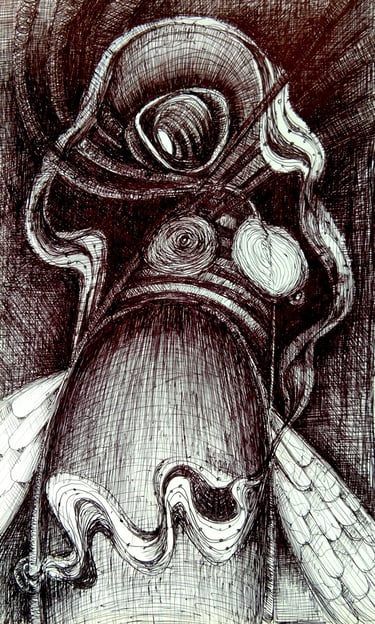Three by Three: Guest Artists in Focus
QUESTION 2. Your monochromatic ink pieces and your more vibrant sculptural works feel like two languages of the same voice. What guides your choice of palette when beginning a new piece?
ANSWER 2. My palette always begins with the emotional temperature of the work. Ink allows me to explore stillness, restraint, and introspection—its monochrome clarity mirrors silence and memory. When the concept demands movement, tension, or sensory intensity, I shift to color and sculptural material. Vibrant palettes help me express the raw, physical energy of emotion, while muted tones suggest reflection or ambiguity. Each palette becomes a different voice of the same inner story, chosen intuitively based on the atmosphere I want the viewer to feel.


Mukul Chandra Barman
Visual Artist & Creative Designer
MEDIUM: ink, pen on paper, acrylic, mixed-media, terracotta
BIO: Mukul Chandra Barman is a Bangladeshi visual artist whose practice explores silence, memory, and the hidden layers of human emotion. Working across ink drawings, abstract acrylic paintings, and sculptural forms, he creates figures and environments that feel both intimate and universal. His series Soul of Silence and Echoes of Passage investigate the inner landscapes of identity through veiled, elongated, and hybrid human forms. Often monochromatic yet deeply expressive, Mukul’s work balances emptiness and intensity, revealing what is felt but not spoken. His art invites viewers into moments of introspection—where shadows, textures, and fragmented forms become visual metaphors for the emotional weight we carry.
FACEBOOK: MukulBarman
QUESTION 3. Many of your portraits contain masked or partially obscured faces, creating a sense of mystery. What do you hope viewers experience when encountering a figure that reveals and conceals at the same time?
ANSWER 3. When a face is partially hidden, it creates a space for the viewer’s own imagination and emotion. I want people to feel that tension between revealing and withholding—because this is how we move through the world, constantly negotiating what we show and what we protect. The obscured faces evoke secrecy, memory, and vulnerability, inviting the viewer to step closer and engage more deeply. My hope is that these portraits act like mirrors, allowing viewers to confront their own uncertainties, masked emotions, and unspoken truths.
QUESTION 1. Your ink drawings often feature elongated, veiled, or hybridized figures. What draws you to these archetypal forms when expressing human emotion and identity?
ANSWER 1. My elongated and veiled figures emerge from a desire to express emotions that cannot be captured through realistic representation. These forms act as archetypes—stretched, blurred, or hybrid—because human emotion itself is fluid and often difficult to define. The veils symbolize silence, inner conflict, and the layers we carry within ourselves. By distorting the body, I highlight the psychological space rather than the physical one, creating figures that embody vulnerability, resilience, and the shifting nature of identity. These archetypes allow me to portray the emotional truths that lie behind appearances.






Whispering Spiral, pen on paper, Mukul Barman, Bangladesh
Banglar Angel, pen on paper, Mukul Barman, Bangladesh
Banglar Monalisa, terracotta, Mukul Barman, Bangladesh
All copyright and reproduction rights are reserved by Mukul Chandra Barman.
Artwork may not be reproduced in any form without the artist's express written permission.
CLICK IMAGE FOR FULL VIEW
CLICK IMAGE FOR FULL VIEW
CLICK IMAGE FOR FULL VIEW